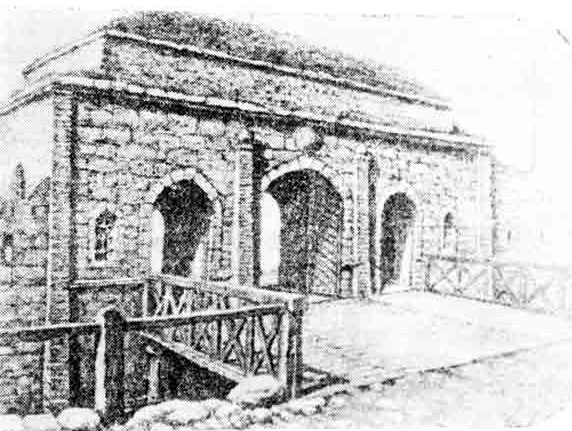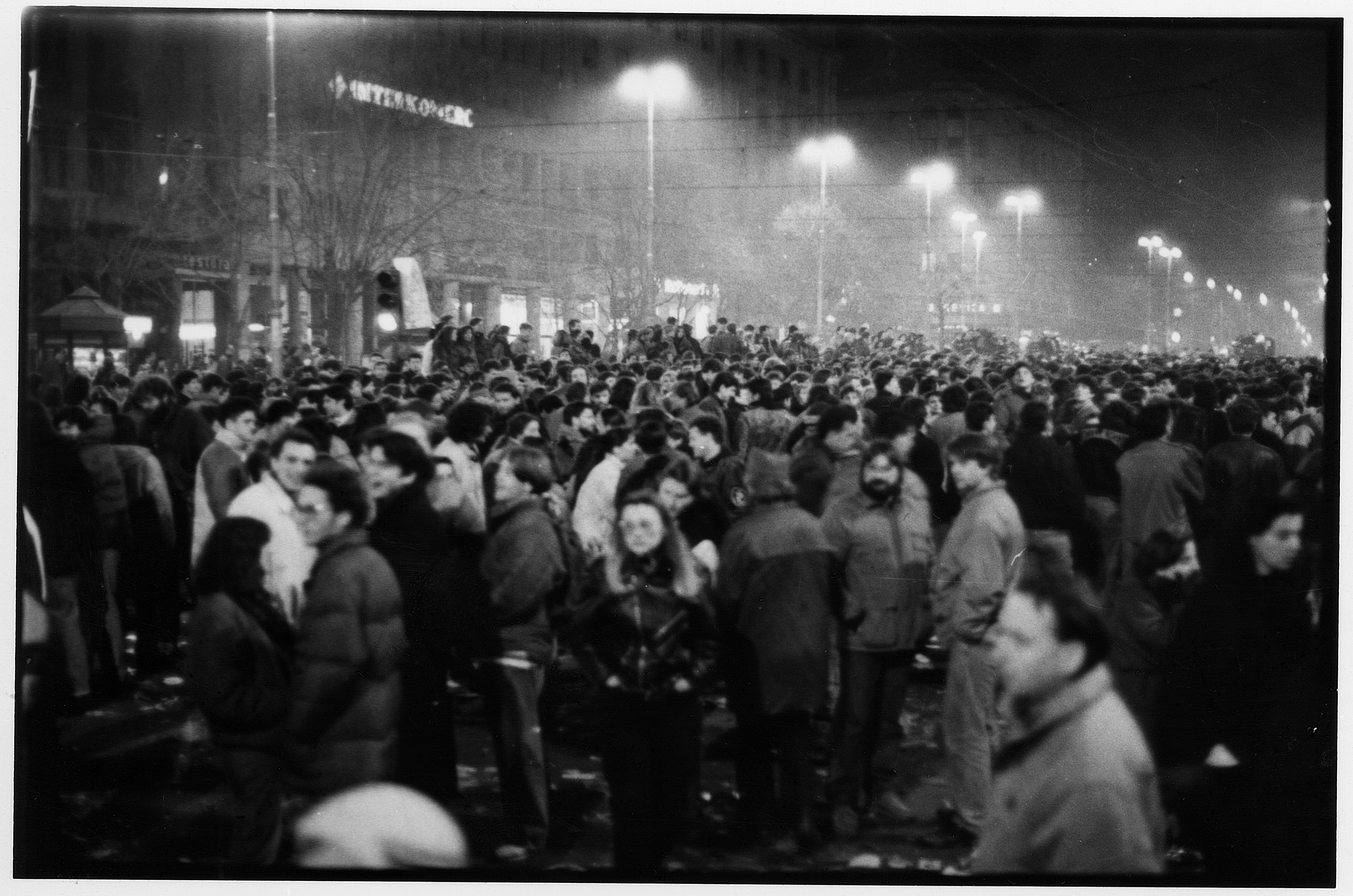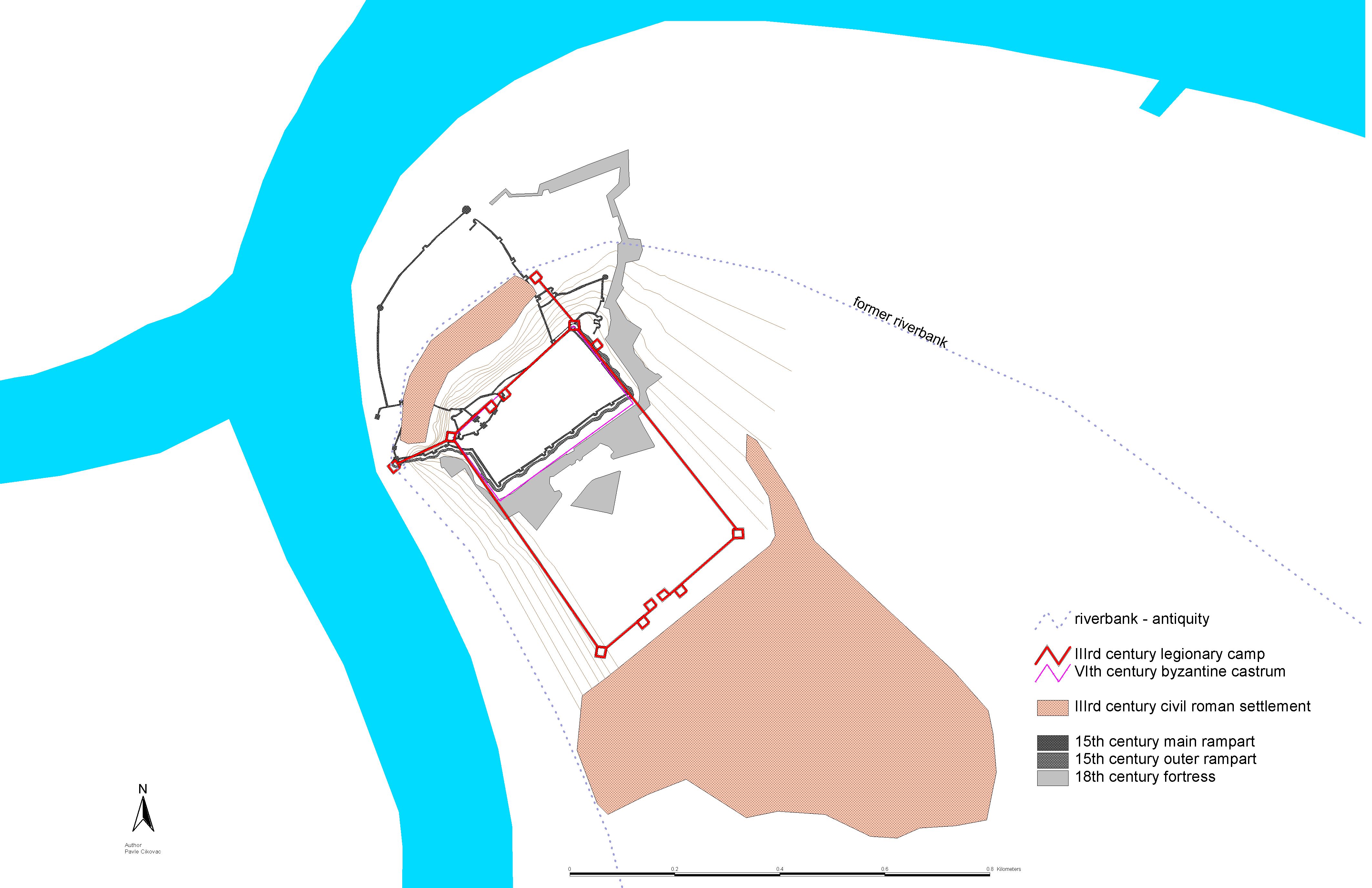|
Republic Square (Belgrade)
The Republic Square or the Square of the Republic (Serbian: Трг републике / Trg republike) is one of the central town squares and an urban neighborhood of Belgrade, located in the Stari Grad municipality. It is the site of some of Belgrade's most recognizable public buildings, including the National Museum, the National Theatre and the statue of Prince Michael. Location The square is located less than 100 meters away from Terazije, designated center of Belgrade, to which it is connected by the streets of ''Kolarčeva'' (traffic) and '' Knez Mihailova'' (pedestrian zone). Many people erroneously consider Square of the Republic to be the center of the city. Through ''Vasina'' street it is connected to the fortress and park of Kalemegdan to the west and through Sremska street it is connected to the neighborhood of Zeleni Venac and further to Novi Beograd. It also borders the neighborhoods of Stari Grad and Dorćol, to the north. Today, it makes one of the loc ... [...More Info...] [...Related Items...] OR: [Wikipedia] [Google] [Baidu] |
List Of Belgrade Neighbourhoods And Suburbs
Belgrade, the capital city of Serbia, is divided into seventeen Subdivisions of Belgrade, municipalities, of which ten are Urban area, urban and seven Suburban area, suburban. In this list, each neighbourhood or suburb is categorised by the municipality in which it is situated. Six of these ten urban municipalities are completely within the bounds of Belgrade City Proper, while the remaining four have both urban and suburban parts. The seven suburban municipalities, on the other hand, are completely located within suburban bounds. Municipalities of the City of Belgrade are officially divided into local communities (Serbian language, Serbian: месна заједница / ''mesna zajednica''). These are arbitrary administrative units which on occasion correspond to the neighbourhoods and suburbs located in a municipality, though usually they don't. Their boundaries often change as the communities merge with each other, split from one another, or change names, so the historical a ... [...More Info...] [...Related Items...] OR: [Wikipedia] [Google] [Baidu] |
Belgrade Fortress
The Belgrade Fortress ( sr-Cyrl, Београдска тврђава, Beogradska tvrđava), consists of the old citadel (Upper and Lower Town) and Kalemegdan Park (Large and Little Kalemegdan) on the confluence of the Sava and Danube rivers, in an urban area of modern Belgrade, Serbia. Located in Belgrade's municipality of Stari Grad, the fortress costitutes the specific historical core of the city. As one of the most important representatives of Belgrade's cultural heritage, it was originally protected right after World War II, among the first officially declared cultural monuments in Serbia. The fortress was declared a Monument of Culture of Exceptional Importance in 1979, and is protected by the Republic of Serbia. It is the most visited tourist attraction in Belgrade, with Skadarlija being the second. Since the admission is free, it is estimated that the total number of visitors (foreign, domestic, citizens of Belgrade) is over 2 million yearly. Location Belgrade Fortress ... [...More Info...] [...Related Items...] OR: [Wikipedia] [Google] [Baidu] |
Castrum
In the Roman Republic and the Roman Empire The Roman Empire ( la, Imperium Romanum ; grc-gre, Βασιλεία τῶν Ῥωμαίων, Basileía tôn Rhōmaíōn) was the post-Roman Republic, Republican period of ancient Rome. As a polity, it included large territorial holdings aro ..., the Latin word ''castrum'', plural ''castra'', was a military-related term. In Latin usage, the singular form ''castrum'' meant 'fort', while the plural form ''castra'' meant 'camp'. The singular and plural forms could refer in Latin to either a building or plot of land, used as a fortified military base.. Included is a discussion about the typologies of Roman fortifications. In English language, English usage, ''castrum'' commonly translates to "Roman fort", "Roman camp" and "Roman fortress". However, scholastic convention tends to translate ''castrum'' as "fort", "camp", "marching camp" or "fortress". Romans used the term ''castrum'' for different sizes of camps – including large ... [...More Info...] [...Related Items...] OR: [Wikipedia] [Google] [Baidu] |
Singidunum
Singidunum ( sr, Сингидунум/''Singidunum'') was an ancient city which later evolved into modern Belgrade, the capital of Serbia. The name is of Celtic origin, going back to the time when Celtic tribe Scordisci settled the area in the 3rd century BC, following the Gallic invasion of the Balkans. Later on, the Roman Republic conquered the area in 75 BC and incorporated it into the province of Moesia. It was an important fort of the Danubian Limes and Roman Legio IV Flavia Felix was garrisoned there since 86 AD. Singidunum was the birthplace of the Roman Emperor Jovian. It was sacked by Huns in 441, and by Avars and Slavs in 584. At the beginning of the 7th century, the Singidunum fort was finally destroyed. A large part of Belgrade's downtown belongs to the "Archaeological Site of Singidunum", which was declared a protected zone on 30 June 1964. Celtic period Origin The Scythian and Thracian-Cimmerian tribes traversed through the region in 7th and 6th century BC. ... [...More Info...] [...Related Items...] OR: [Wikipedia] [Google] [Baidu] |
1991 Protests In Belgrade
The 1991 protests in Belgrade happened on the streets of Belgrade, the capital of Serbia and Yugoslavia when a protest rally turned into a riot featuring vicious clashes between the protesters and police. The initial mass rally that took place on 9 March 1991 was organized by Vuk Drašković's Serbian Renewal Movement (SPO), an opposition political party in Serbia, protesting the rule of Slobodan Milošević and his Socialist Party of Serbia, particularly their misuse of Radio Television Belgrade. Two people died in the ensuing violence, and the government then ordered the Yugoslav People's Army onto the city streets. The police detained several prominent SPO officials and banned two media outlets considered unfriendly to the government. The protests are referred to in Serbian as ', i.e. the March 9 protest, after this initial event. The next day, in reaction to the events of the previous day, more protests drew large and diverse crowds, including leaders of the Democratic Part ... [...More Info...] [...Related Items...] OR: [Wikipedia] [Google] [Baidu] |
Slobodan Milosević
Slobodan ( sr-Cyrl, Слободан) is a Serbo-Croatian masculine given name which means "free" (''sloboda'' / meaning "freedom, liberty") used among other South Slavs as well. It was coined by Serbian liberal politician Vladimir Jovanović who, inspired by John Stuart Mill's essay ''On Liberty'' baptised his son as Slobodan in 1869 and his daughter Pravda (Justice) in 1871. It became popular in both Kingdom of Yugoslavia (1918–1945) and the Socialist Federal Republic of Yugoslavia (1945–1991) among various ethnic groups within Yugoslavia and therefore today there are also Slobodans among Croats, Slovenes and other Yugoslav peoples. During the decade after World War II, the name Slobodan (means "freedom") became the most popular Serbian male name, and it remained so until 1980. Common derived nicknames are Sloba, Slobo, Boban, Boba, Bobi and Čobi. The feminine counterpart is Slobodanka. It may refer to: * Slobodan Aligrudić (1934–1985), Serbian actor * Slobo Ili ... [...More Info...] [...Related Items...] OR: [Wikipedia] [Google] [Baidu] |
Serbian Renewal Movement
The Serbian Renewal Movement ( sr-cyrl, Српски покрет обнове, Srpski pokret obnove, SPO) is a liberal and monarchist political party in Serbia. History The Serbian Renewal Movement party was founded in 1990 through the merger of Drašković's faction from the Serbian National Renewal (SNO) party and Vojislav Šešelj's Serbian Freedom Movement. Šešelj left the party in 1991 after internal quarrels and founded the Serbian Radical Party. It was initially aligned with national conservatism and supported the territorial expansion of Serbia. The Democratic Movement of Serbia was formed in May 1992 as a political alliance made up primarily of SPO, New Democracy (ND), Democratic Party of Serbia (DSS). The political alliance however broke, and was dissolved in 1993. The SPO was part of the "Together" (''Zajedno'') coalition in the 1996 parliamentary election which received 23.8% of the popular vote, losing to the Socialist Party of Serbia (SPS). In 1997, Draško ... [...More Info...] [...Related Items...] OR: [Wikipedia] [Google] [Baidu] |
Vuk Drašković
Vuk Drašković ( sr-cyrl, Вук Драшковић, ; born 29 November 1946) is a Serbian writer and politician. He is the leader of the Serbian Renewal Movement, and served as the war-time Deputy Prime Minister of the Federal Republic of Yugoslavia in 1999 during the rule of Slobodan Milošević and the Minister of Foreign Affairs of both Serbia and Montenegro and Serbia from 2004 to 2007. He graduated from the University of Belgrade Faculty of Law in 1968. From 1969-80, he worked as a journalist in the Yugoslav news agency Tanjug. He was a member of the League of Communists of Yugoslavia and worked as the chief of staff of the Yugoslav President Mika Špiljak. Early life and career Drašković was born in the small village of Medja in the Banat region to a family of settlers from Herzegovina. He was three months old when his mother, Stoja Nikitović, died. His father, Vidak, remarried and had two more sons - Rodoljub and Dragan; and three daughters - Radmila, Tanja and Lj ... [...More Info...] [...Related Items...] OR: [Wikipedia] [Google] [Baidu] |
Dorćol
Dorćol ( sr-cyr, Дорћол; ) is an affluent urban neighborhood of Belgrade, the capital of Serbia. It is located in Belgrade's municipality of Stari Grad. Located along the right bank of the Danube, Dorćol is oldest surviving neighborhood in Belgrade. It is known for its specific urban charm and the mentality of its residents. The neighborhood has experienced artistic revival since the 2000s concurrently with the Savamala neighborhood on the opposite, Sava, bank. After being featured in numerous reports, including by the BBC and ''The Guardian'', ''Time Out'' magazine placed Dorćol on their list of "50 coolest neighborhoods". It has been described as a Belgrade "phenomenon", an "exciting, creative and inventive spot", and the "authentic, organic soul of the city". A section of Upper Dorćol was declared a spatial cultural-historical unit in 1989, and placed under protection as the "Area surrounding Dositej's Lyceum". Location Dorćol begins already some 700 meters ... [...More Info...] [...Related Items...] OR: [Wikipedia] [Google] [Baidu] |
Novi Beograd
New Belgrade ( sr, / , ) is a municipality of the city of Belgrade. It is a planned city, built since 1948 in a previously uninhabited area on the left bank of the Sava river, opposite old Belgrade. In recent years, it has become the central business district of Belgrade and its fastest developing area, with many businesses moving to the new part of the city, due to more modern infrastructure and larger available space. With 214,506 inhabitants, it is the second most populous municipality of Serbia after Novi Sad. Geography New Belgrade is located on the left bank of the Sava River, in the easternmost part of the Srem region. Administratively, its northeastern section touches the right bank of the Danube, right before the Sava's confluence. It is generally located west of the 'Old' Belgrade to which it is connected by six bridges ( Ada Bridge, New Railway Bridge, Old Railway Bridge, Gazela, Old Sava Bridge and Branko's Bridge). European route E75, with five grade separatio ... [...More Info...] [...Related Items...] OR: [Wikipedia] [Google] [Baidu] |
Zeleni Venac
Zeleni Venac ( sr-cyr, Зелени венац) or colloquially Zelenjak ( sr-cyr, Зелењак) is an urban neighborhood of Belgrade, the capital of Serbia. It is located in the Belgrade's municipalities of Savski Venac (major part) and Stari Grad. Location Zeleni Venac is located in downtown Belgrade, just few minutes away to the east of Terazije, the designated center of the city, down the Prizrenska or Sremska streets. It borders the neighborhood of Savamala to the south, while the northern border is Brankova Street which separates it from the neighborhoods of Kosančićev Venac and Varoš Kapija in the municipality of Stari Grad. The car tunnel ('' Terazije Tunnel'') under Terazije connects it to Republic Square while underground pedestrian passage connects it to Terazije and Prince Michael Street via Prizrenska and Sremska streets, respectively. Park Luka Ćelović is on the southeast border of the neighborhood. History Antiquity Northern part of modern neighb ... [...More Info...] [...Related Items...] OR: [Wikipedia] [Google] [Baidu] |







